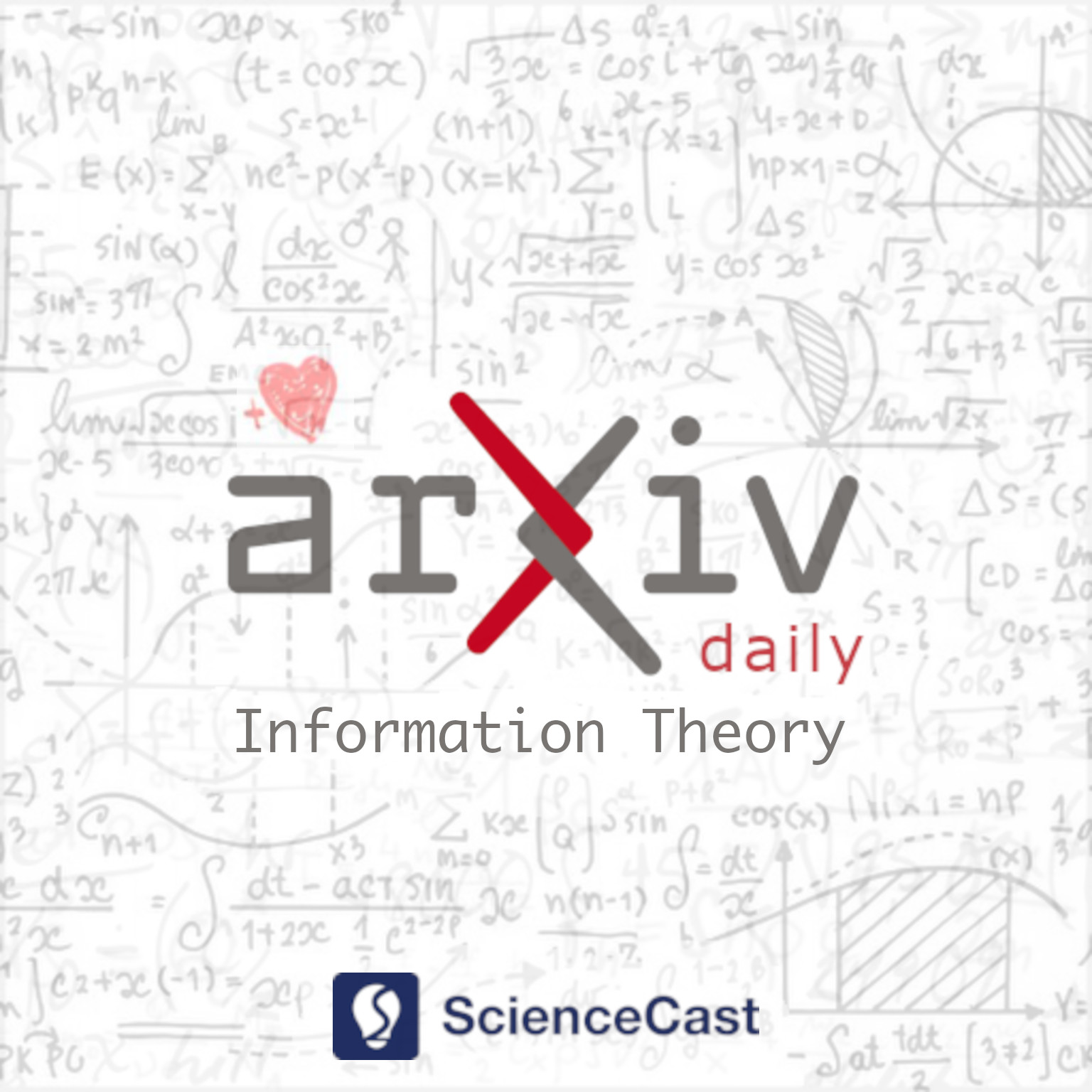
Information Theory (cs.IT)
Tue, 25 Apr 2023
1.Statistics of Random Binning Based on Tsallis Divergence
Authors:Masoud Kavian, Mohammad Mahdi Mojahedian, Mohammad Hossein Yassaee, Mahtab Mirmohseni, Mohammad Reza Aref
Abstract: Random binning is a powerful and widely used tool in information theory. In this paper, considering the Tsallis measures, we examine the output statistics of random binning (OSRB). Using the OSRB framework, the achievable rate region of the wiretap channel with Tsallis divergence as a security measure is investigated.
2.State-Dependent DMC with a Causal Helper
Authors:Amos Lapidoth, Ligong Wang
Abstract: A memoryless state sequence governing the behavior of a memoryless state-dependent channel is to be described causally to an encoder wishing to communicate over said channel. Given the maximal-allowed description rate, we seek the description that maximizes the Shannon capacity. It is shown that the maximum need not be achieved by a memoryless (symbol-by-symbol) description. Such descriptions are, however, optimal when the receiver is cognizant of the state sequence or when the description is allowed to depend on the message. For other cases, a block-Markov scheme with backward decoding is proposed.
3.Channel Estimation and Signal Detection for NLOS Ultraviolet Scattering Communication with Space Division Multiple Access
Authors:Yubo Zhang, Yuchen Pan, Chen Gong, Beiyuan Liu, Zhengyuan Xu
Abstract: We design a receiver assembling several photomultipliers (PMTs) as an array to increase the field of view (FOV) of the receiver and adapt to multiuser situation over None-line-of-sight (NLOS) ultraviolet (UV) channels. Channel estimation and signal detection have been investigated according to the space division characteristics of the structure. Firstly, we adopt the balanced structure on the pilot matrix, analyze the channel estimation mean square error (MSE), and optimize the structure parameters. Then, with the estimated parameters, an analytical threshold detection rule is proposed as a preliminary work of multiuser detection. The detection rule can be optimized by analyzing the separability of two users based on the Gaussian approximation of Poisson weighted sum. To assess the effect of imperfect estimation, the sensitivity analysis of channel estimation error on two-user signal detection is performed. Moreover, we propose a successive elimination method for on-off keying (OOK) modulated multiuser symbol detection based on the previous threshold detection rule. A closed-form upper bound on the detection error rate is calculated, which turns out to be a good approximation of that of multiuser maximum-likelihood (ML) detection. The proposed successive elimination method is twenty times faster than the ML detection with negligible detection error rate degradation.
4.A New Information Theory of Certainty for Machine Learning
Authors:Arthur Jun Zhang
Abstract: Claude Shannon coined entropy to quantify the uncertainty of a random distribution for communication coding theory. We observe that the uncertainty nature of entropy also limits its direct usage in mathematical modeling. Therefore we propose a new concept troenpy,as the canonical dual of entropy, to quantify the certainty of the underlying distribution. We demonstrate two applications in machine learning. The first is for the classical document classification, we develop a troenpy based weighting scheme to leverage the document class label. The second is a self-troenpy weighting scheme for sequential data and show that it can be easily included in neural network based language models and achieve dramatic perplexity reduction. We also define quantum troenpy as the dual of the Von Neumann entropy to quantify the certainty of quantum systems.
5.A new invariant for cyclic orbit flag codes
Authors:Clementa Alonso-González, Miguel Ángel Navarro-Pérez
Abstract: In the network coding framework, given a prime power $q$ and the vector space $\mathbb{F}_q^n$, a constant type flag code is a set of nested sequences of $\mathbb{F}_q$-subspaces (flags) with the same increasing sequence of dimensions (the type of the flag). If a flag code arises as the orbit under the action of a cyclic subgroup of the general linear group over a flag, we say that it is a cyclic orbit flag code. Among the parameters of such a family of codes, we have its best friend, that is the largest field over which all the subspaces in the generating flag are vector spaces. This object permits to compute the cardinality of the code and estimate its minimum distance. However, as it occurs with other absolute parameters of a flag code, the information given by the best friend is not complete in many cases due to the fact that it can be obtained in different ways. In this work, we present a new invariant, the best friend vector, that captures the specific way the best friend can be unfolded. Furthermore, throughout the paper we analyze the strong underlying interaction between this invariant and other parameters such as the cardinality, the flag distance, or the type vector, and how it conditions them. Finally, we investigate the realizability of a prescribed best friend vector in a vector space.